From the Archive: Photograph of Dancer Noami Leaf Halpern
Photo of Noami Leaf Halpern performing with a basket balanced on her head, collected as an artifact associated with her Oral History Interview, conducted by Christa Whitney for the Yiddish Book Center’s Wexler Oral History Project, Woodstock, New York, January 27th, 2017.
What We Found
This is a photograph from 1937 of Jewish dancer Noami Leaf Halpern in costume, balancing a basket of flowers on her head and holding up finger cymbals. The costume depicted in the picture is from one of Noami’s dance performances, “Dances of the Bible & the Near East,” which she performed in New York City in March 1937. Noami developed much of choreography and dancing from Jewish and Near Eastern dance traditions. She also designed all of her costumes, which her mother then sewed.
Noami, who celebrated her 106th birthday last summer, was interviewed as part of the Yiddish Book Center’s Wexler Oral History Project in 2017. The photograph featured here is among the digitized artifacts that appear on her interview page on the Center’s website, along with her full video interview and interview highlights. The interview is in Yiddish but is accompanied by a searchable time-coded bilingual index in both Yiddish and English, work which was made possible by a 2017–2020 grant from the National Endowment for the Humanities to enhance the Project’s accessibility.
Why It Matters
Noami Leaf Halpern is a prolific choreographer and dancer who infuses her art with her Jewishness. Born in Palestine in 1914, she moved with her parents to the United States in 1915 and, as a child, attended the labor Zionist Yiddish summer camp, Camp Kinderwelt, which she describes in her interview as “heaven.” It was there that she first began to dance. As a teenager, she studied with renowned Russian dancer and choreographer Mikhail Fokine and danced in the Ziegfeld Follies at the age of 20. In the 1950s, she performed at Fred Berk’s Israeli Dance Festivals. Around that time, she also put together a dancing troupe with Yemeni dancers; the troupe performed at the Museum of Modern Art in New York and appeared on the Steve Allen show in 1960. She also founded the Festival Dance Company in Boston, and has been involved in the sacred dance movement.
Throughout the span of her more than fifty-year career, Noami toured around the world, including in Europe, Latin America, and Israel. In her interview with the Yiddish Book Center’s Wexler Oral History Project, she shares stories of those tours, including memories from an Eastern European tour that she did in the 1930s, of dancing on tables when one venue didn’t have a stage, and of dancing in a theater without heating in the dead of winter.
Noami was specifically interested in Jewish and Near Eastern dancing, traditions which deeply informed the art that she created and performed. She famously choreographed and developed dances depicting the stories of biblical women, including Esther, Rebecca, Ruth, Miriam, and Deborah. In her interview with the Wexler Oral History Project, Noami explains that she was particularly interested in depicting biblical stories in her dances because they were her stories, and those of her ancestors. Speaking in Yiddish, she says, “Es iz mayn lebn, un d’lebn fun mayne elte-elte-elte zeydes” or “It’s my life, and the life of my great-great-great-grandparents.”
There is a beauty and power in a Jewish choreographer and dancer using her art form to depict biblical female characters. While text study is undeniably a deeply important part of Jewish tradition and a powerful medium for transmitting culture and history, the movement and emotion of dance allow us to engage with these ancient texts with new depth. Dance offers ways of building bridges from different periods of Jewish history to the present that transcend intellect. The very nature of the medium means that Noami had to embody the women—in all of their physical, emotional, and spiritual complexity.
Furthermore, her specific focus on female characters, whose experiences and perspectives have often been marginalized, brings those powerful and multidimensional women to the fore. By choreographing and performing dances centered around biblical women, Noami amplified their stories by literally giving them a stage and presenting them as physical, dynamic characters. Her breath and movements brought her foremothers to life, collapsing the chronological (and geographic) distances between her and her ancestors, and deepening the strength of their intergenerational connections.
In meditating on why dance has been so meaningful to her, Noami said, “Far di ale zakhn far vos s’iz nisht faran verter—ken men tantsn”: ”For all those things that you can’t describe in words—you can dance them.” This reflection speaks to the spiritual and emotional depth of Noami’s creative work and, in the context of her focus on the stories of biblical women, beautifully illustrates the multidimensionality that dance can add to our understanding of the roles of the women in biblical stories.
Fun Fact
In her later years, Noami became a Yiddish teacher and mentor, and an advocate for Yiddish language and culture. She has had such an impact on others that, on her 106th birthday, despite rain and COVID, community members and former students of hers came to celebrate her through a window, bringing signs, flowers, and birthday cake.
Learn More
You can watch Noami’s full interview (in Yiddish with a searchable English index) and interview highlights (including an amusing story of the time the fish that her mother was going to use to make gefilte fish disappeared!), and see more photographs, posters, and other artwork related to her dancing on her interview page.
This post is part of JWA’s From the Archive column. It was written in partnership with The Yiddish Book Center.

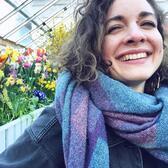
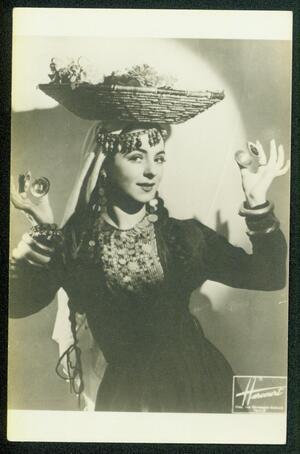
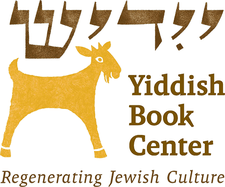
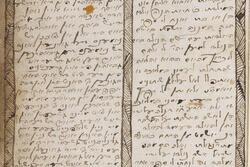
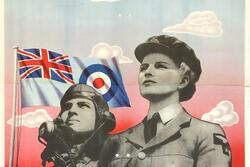



I remember when she occasionally visited her father who was the art teacher at my Hebrew school, the National Hebrew School on the Lower East Side. She called herself Allah Leaf, was slim with long dark hair, vivacious and a dancer. Christa Whitney perhaps at some time might link us up which would be great. Thanks for sharing these insights. D. Rebecca Fleischman